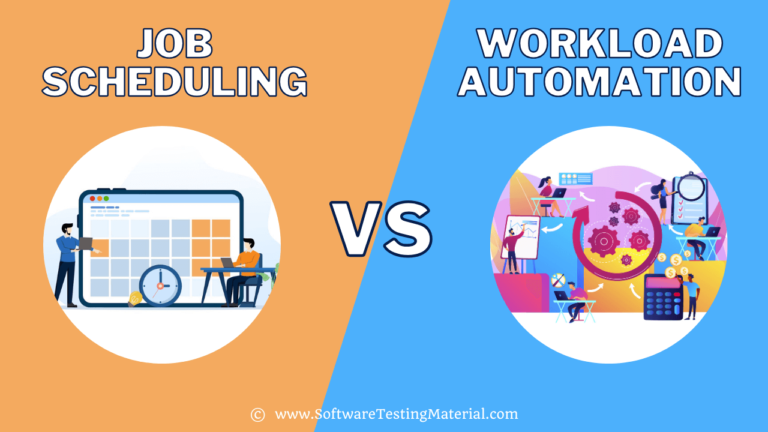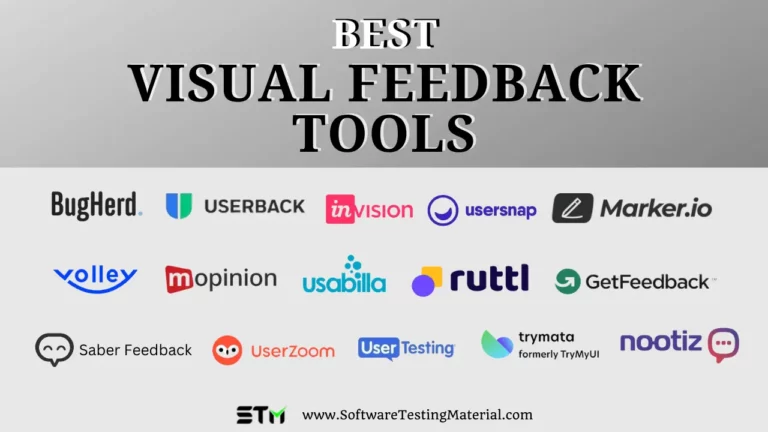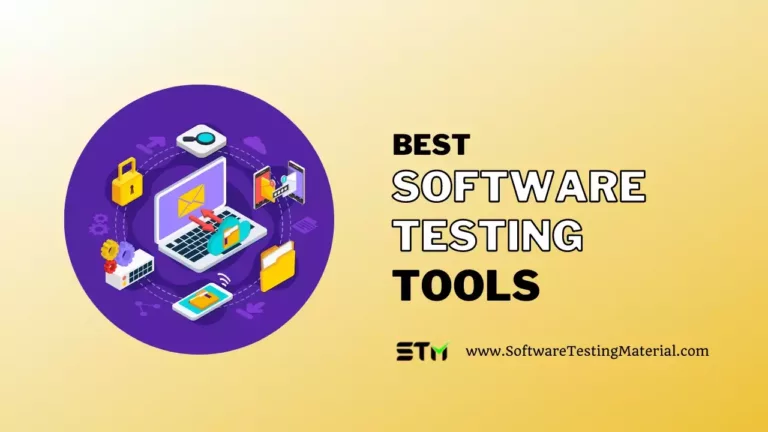ActiveBatch Workload Automation Tool Review: Here’s What To Expect From The Popular WLA Tool In 2025
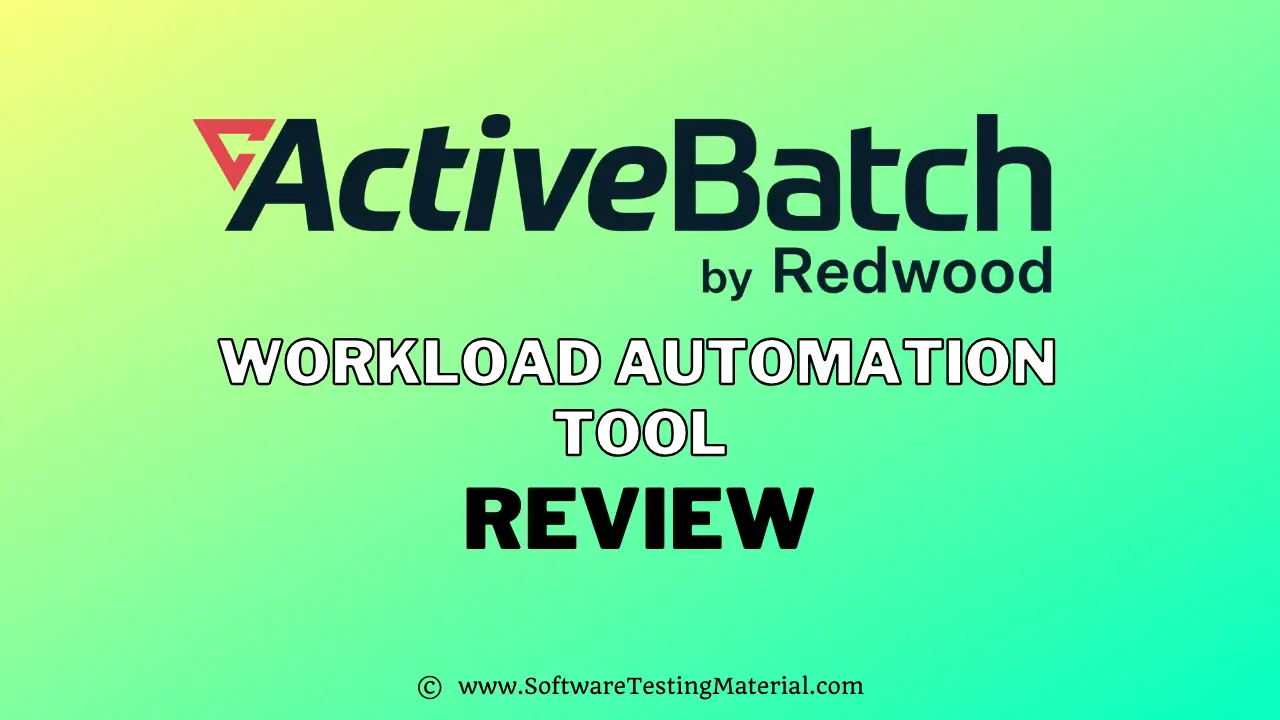
Take a look at this comprehensive review tutorial for ActiveBatch Workload Automation and Enterprise Job Scheduling Software.
Workload automation (WLA) tools are used to create and execute unattended workloads, processes and applications for business and IT. Users can assemble discrete tasks into longer-running workflows, using variables and event-triggers to pass data downstream.
WLA has grown in popularity as IT environments become more complex. WLA tools provide programmatic integrations including APIs, enabling users to connect endpoints regardless of underlying technologies. This makes it possible for WLA solutions to manage workloads across heterogeneous tech stacks, a key requirement for organizations operating in hybrid- or multi-cloud environments.
Must read: Workload Automation vs Workflow Automation: What’s the Difference?
The role of IT is changing as organizations become more reliant on digital technologies. IT teams are increasingly responsible for business operations, consumer services and long-term business goals. However, IT teams are already overworked and understaffed, struggling to deliver projects on time while maintaining service levels. IT automation tools, including workload automation and enterprise job schedulers, should be used to eliminate manual tasks and to streamline the development of end-to-end services.
What Is ActiveBatch Workload Automation?
ActiveBatch Workload Automation, from Advanced Systems Concepts, Inc. (ASCI), is a low-code automation solution for building, monitoring and managing cross-platform processes. ActiveBatch enables users to connect to virtually any endpoint through an easy-to-use REST API adapter so that limitless connections can be created for any business or IT requirement.
ActiveBatch is highly extensible and can be used across a variety of use cases including IT process automation, business process automation, enterprise job scheduling, data warehousing, IT infrastructure and more. ActiveBatch gives IT a single point of control for monitoring and managing systems, applications and services across the enterprise.
Compared to similar solutions, ActiveBatch stands out for its large catalogue of features available out-of-the-box, as well as its commitment to customer success.
Video: Redefine Your IT Automation Strategy
Key ActiveBatch Features And Capabilities
- White Glove Onboarding with a dedicated Customer Success team to guide installation and configuration process
- Hundreds of production-ready Job Steps that can be easily assembled with ActiveBatch’s drag-and-drop workflow designer
- Limitless API accessibility through the ActiveBatch Service Library and REST API adapter
- Dozens of event-triggers with constraints, variables and granular date/time scheduling
- Reusable templates accelerate development and can cascade modifications to hundreds or thousands of child jobs
- Change management, check-in/check-out, simulation runs and self-documenting Job Steps streamline DevOps
- Full support for Windows security model so access can be managed for existing accounts
- Full audit trails for all objects and accounts, with revision tracking and easy reporting for compliance
- Workload balancing and optimization to prevent bottlenecks and delays, with machine learning to manage resource allocation in real-time
- Real-time monitoring stays ahead of workload demands, triggering auto-remediation workflows and sending alerts
- Periodic health reports using AI provide specific recommendations to improve efficiency and reliability in your automation environment
- An expansive knowledgebase and in-depth online learning portal so users can learn new skills to meet new challenges, with easy access to experts through ActiveBatch’s support portal
Must read: Best Workload Automation Tools
ActiveBatch Super REST API Adapter
ActiveBatch’s Super REST API Adapter is an out-of-the-box feature that enables users to rapidly build API connections to any server, application or service. New tools and technologies can be seamlessly integrated, allowing services and solutions to be quickly rolled out. APIs and associated processes can be developed and maintained in a single window, facilitating end-to-end orchestration.
The Super REST API Adapter is intuitive and easy-to-use, enabling IT teams to build API calls to any endpoint without years of experience. This means less time spent integrating new tools, which minimizes development costs and reduces the strain on IT. The Super REST API Adapter also includes:
- A UI that supports a variety of authentication and content types with custom options for endless integrations
- Tool tips, error flags, and dynamic pick-lists that explain functionalities, notify users of potential errors, and provide variables based on content selection
- The ability to test all API operations within the REST API adapter, delivering an immediate response without having to wait for tests to run
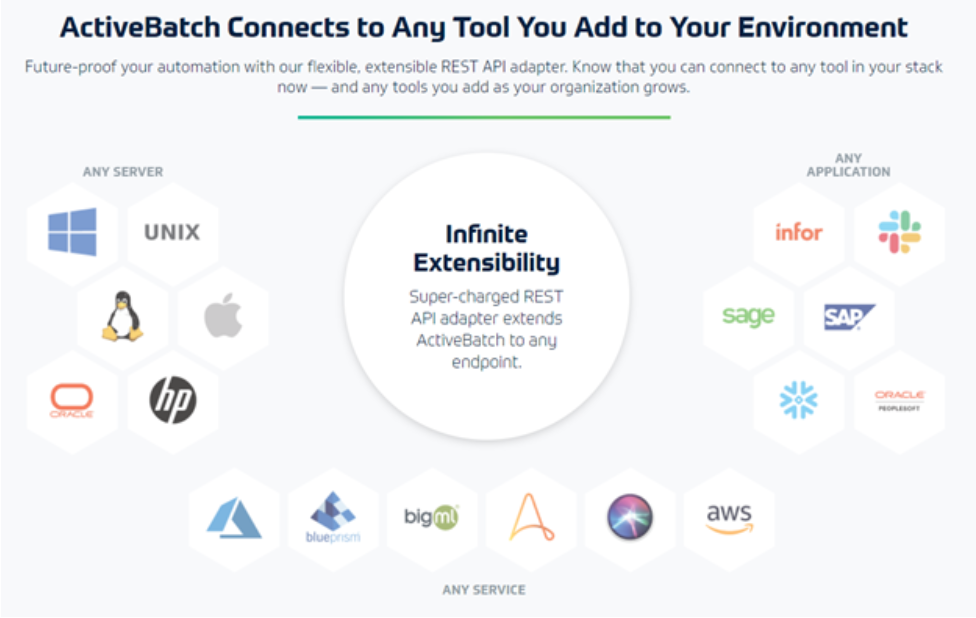
ActiveBatch Products
ActiveBatch offers a list of products that can be added onto ActiveBatch. This includes extensions into popular systems, additional interfaces and a platform-agnostic managed file transfer solution.
ActiveMFT: ActiveMFT is a platform-independent managed file transfer (MFT) solution that can handle any protocol, as well as handle multiple protocols from a single server. Deployable in any environment (cloud-based, on-premises or hybrid), ActiveMFT enables users to centrally manage connections at the enterprise level.
High-Availability Job Scheduler: ActiveBatch’s High-Availability job scheduler operates in active-standby mode, monitoring your primary job scheduler(s). If a primary scheduler is ever unresponsive, all jobs and workflows will be sent to the standby scheduler(s) so they continue to run as planned.
Self-Service Portal: The ActiveBatch Self-Service Portal (SSP) gives help desk and business users the ability to run and monitor processes. IT retains full control of all accounts, objects, jobs and security, with multi-factor authentication to prevent unauthorized access. Non-IT users can easily execute jobs critical to their functions and research previous transactions without opening IT tickets.
Mobile Ops: ActiveBatch Mobile Ops is a secure mobile application for iOS and Android that enables users to access their ActiveBatch environment from outside the office. Users can monitor workloads, trigger processes, restart or disable failed jobs and more. This makes it possible for IT operators to rapidly respond to events from their mobile devices.
Web Console: The ActiveBatch Web Console provides secure access to ActiveBatch environments via the web, reducing the need for thick-client installs. Web Console supports most major web browsers, enabling users to create, edit and manage workloads from wherever there is internet access.
Extensions: ActiveBatch offers direct connection extensions to dozens of common systems and vendors. Each extension contains templated, low-code Job Steps that simplify the integration of critical tools in your tech stack, including ERP, BI, big data, Informatica, Oracle, IBM, Amazon EC2, Microsoft (Azure, SQL Server, System Center) and many more.
ActiveBatch Pricing
ActiveBatch is unique in its price offering. ActiveBatch licenses are based on the number of servers so that users aren’t charged extra for higher CPU. Users can run unlimited jobs across all environments as part of ActiveBatch’s base package, allowing users to avoid overage penalties that are common in the WLA market. Contact ActiveBatch for more information.
How ActiveBatch Works
ActiveBatch is entirely client-server based and consists of three main components: the ActiveBatch client, which supports the graphical user interface; the ActiveBatch Job Scheduler, which manages workloads; and the ActiveBatch Execution Agent, which executes workloads. ActiveBatch can be deployed in a variety of configurations to meet your needs.
ActiveBatch is an object-oriented solution which means that all user accounts, jobs, workflows and alerts can be managed without the need for custom scripting.
Let’s take a look at what can be done when creating Objects in ActiveBatch.
Creating Objects In ActiveBatch
All Objects created in ActiveBatch are stored in a central navigation pane, similar to the Windows File System. Root-level objects such as folders can be created to organize your jobs, workflows and shared objects.
Creating an Object is as simple as clicking and selecting the type of object you want to create. Users can then name Objects and specify additional parameters depending on the type of object being created (eg., alert, variable, job, group).
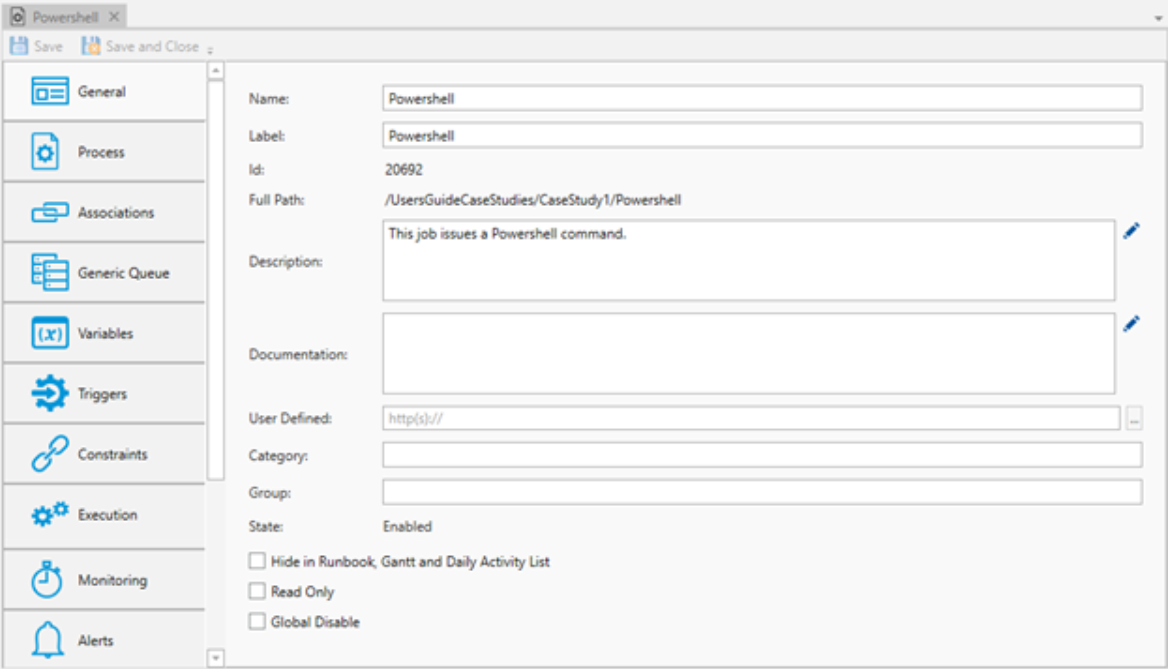
ActiveBatch Objects can also include descriptions and documentation which can be required by system administrators. This makes it easier for developers to understand the goal and functionality of objects created by other users.
Creating A Job Object In ActiveBatch
Creating a Job in ActiveBatch starts with defining four properties:
- Name/Label
- Submission Queue where the Job will be sent to execute
- User Account to define which credentials will be used when submitting the Job
- Payload to define the work being performed
There are two types of Queues in ActiveBatch, an Execution Queue and a Generic Queue (a collection of Execution Queues). Generic Queues enable distributed job scheduling, providing high availability, load balancing, resource optimization and automated provisioning.
When setting up a queue, users can define job limits and also queue characteristics such as CPU, operating system or location of deployment. This makes it possible for users to ensure that critical workloads will have resources with optimal characteristics at runtime.
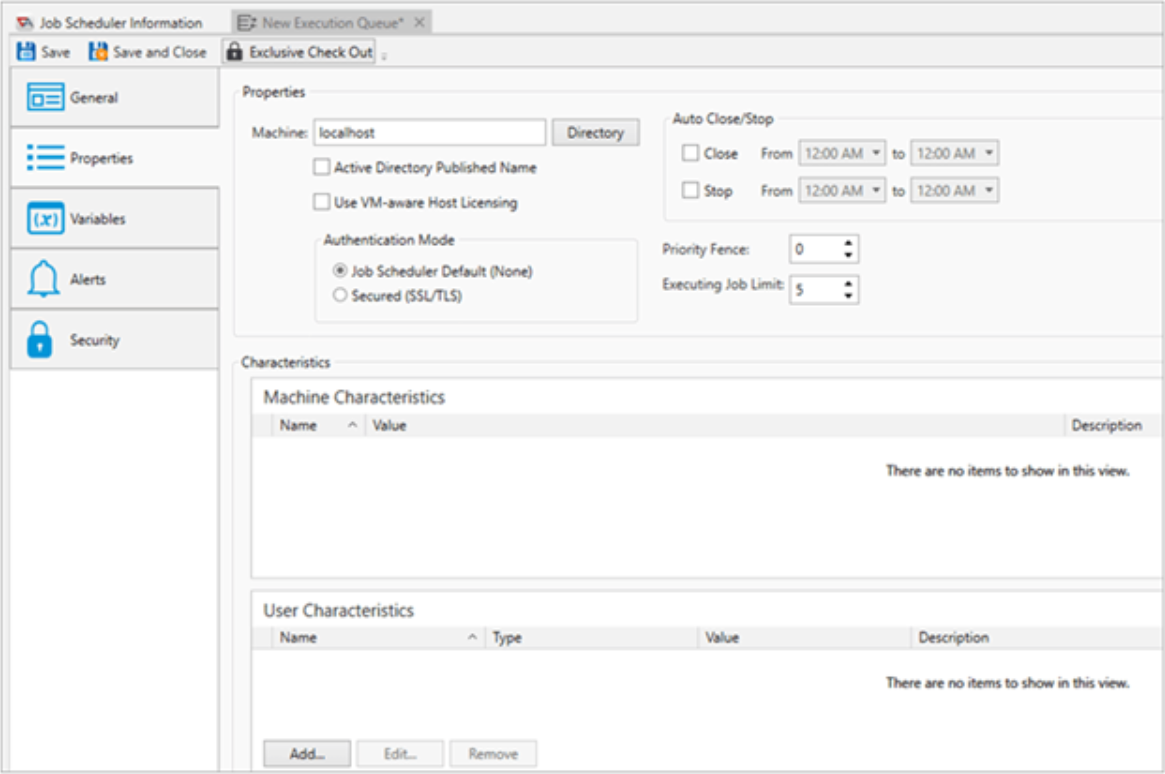
User Account objects define what credentials will be used when submitting a workload for execution. Administrators can use existing Active Directory credentials when creating User Accounts.
Once an Execution Queue and User Account have been created, these can be associated to Job objects.
Jobs can refer to any Job Steps within the Jobs Library. This includes prebuilt Job Steps, custom Jobs and Jobs included within extensions. ActiveBatch is script-language independent and also enables users to turn existing scripts into Job Steps.
As you can see below, Job Steps are highly customizable. Users can define associations, variables, triggers, constraints, alerts and more. You can explore these Job properties with a demo and free trial of ActiveBatch.
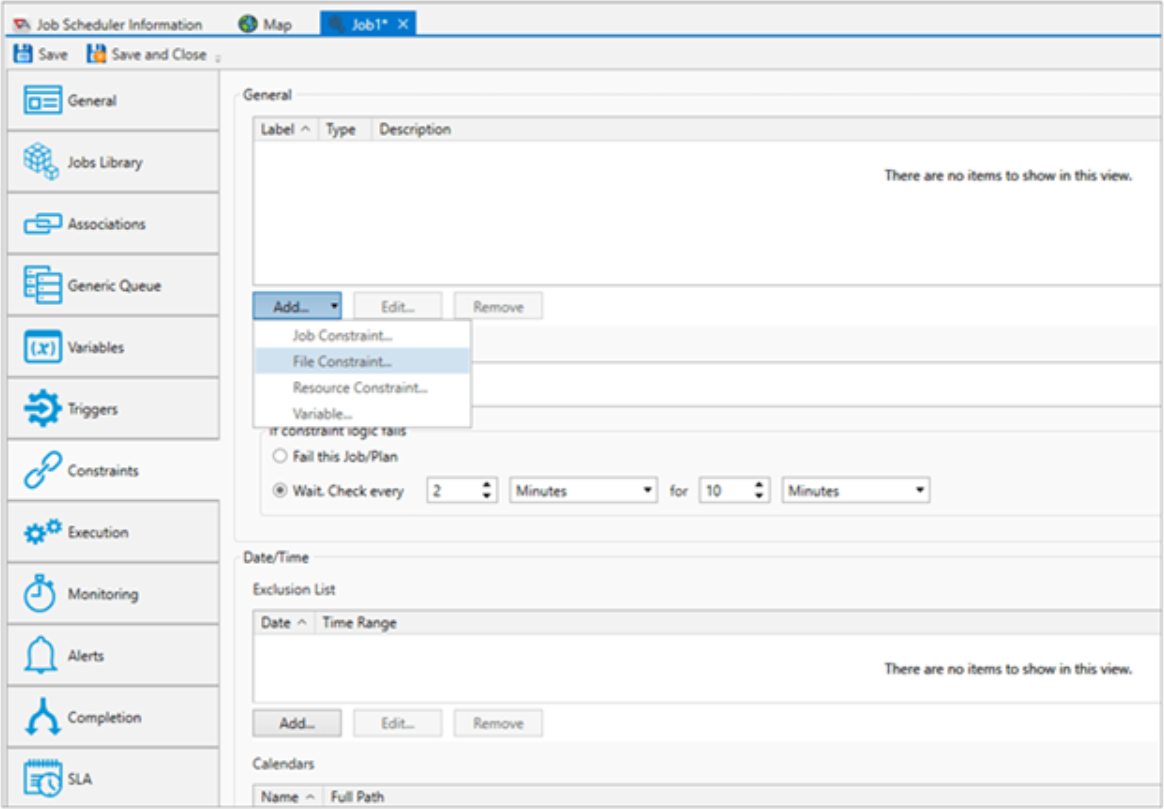
To create the payload, or actual work that a Job completes, users can drag-and-drop existing Objects under the Jobs Library tab. There are hundreds of prebuilt Job Steps, including universal connectors for commonly scripted actions. This is also where users can access additional Job Steps for any extensions they have licensed.
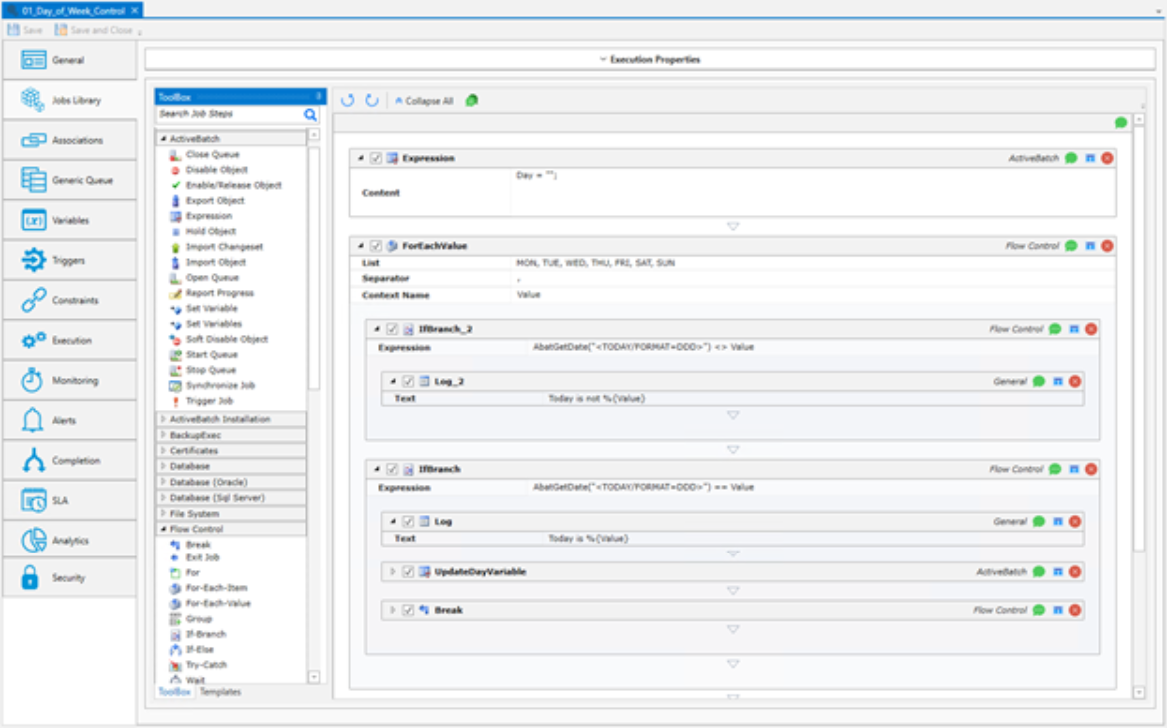
Users can also interface with RESTful Services, Web Services, WSDLs, command lines (PowerShell, COM, etc.) and much more through the ActiveBatch Service Library. API calls can be turned into reusable Job Steps that can be easily incorporated using the drag-and-drop Job Step Editor.
Navigating ActiveBatch’s Views
The ActiveBatch Dashboard is designed for flexibility and ease-of-use. Users can open, close and re-dock panes and choose between different modes (eg., light or dark mode).
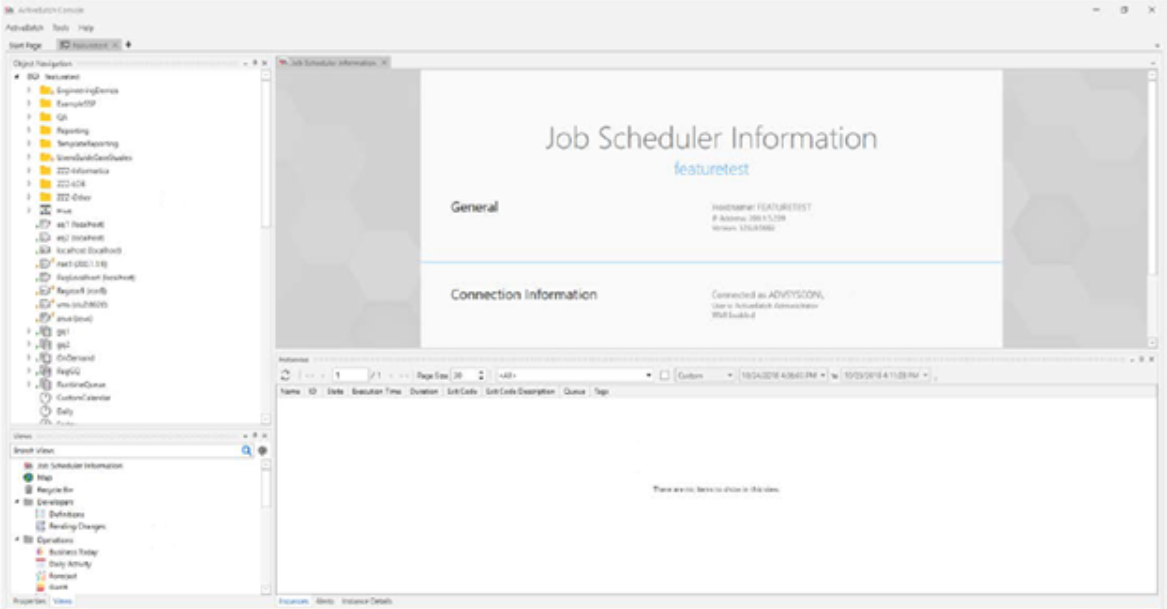
The Views pane on the right is organized into folders for Developers, Operators, Administrators and Scheduling Analytics so users can quickly locate information. For example, the Daily Activity view gives Operators a real-time list of instances for a given date.
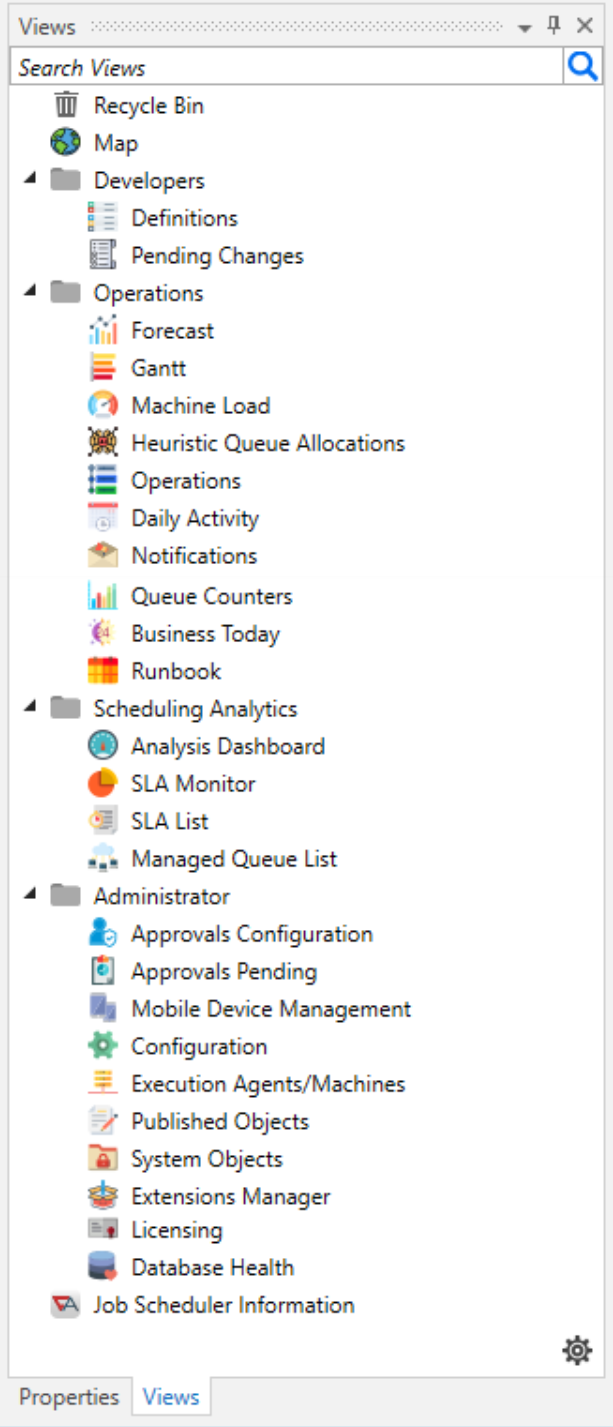
The Main Pane at the top of the ActiveBatch Dashboard uses tabs that allows users to click between different views. Below the Main Pane is the Instances Pane which lists Job runs so users can easily pause, abort or restart an instance. Users can also view details of instances including complete log files.

ActiveBatch provides over a dozen views that make it easy for users to access granular information based on their roles. These views also support key ActiveBatch features such as intelligent resource provisioning and SLA monitoring.
For example, ActiveBatch’s Map View provides a graphical display of workflows including dependencies and relationships between Jobs. Users can also monitor instances, trigger Jobs and edit workflows from within Map View. This is also where ActiveBatch’s Workflow Optimizer identifies opportunities to streamline workflows to make them more efficient.
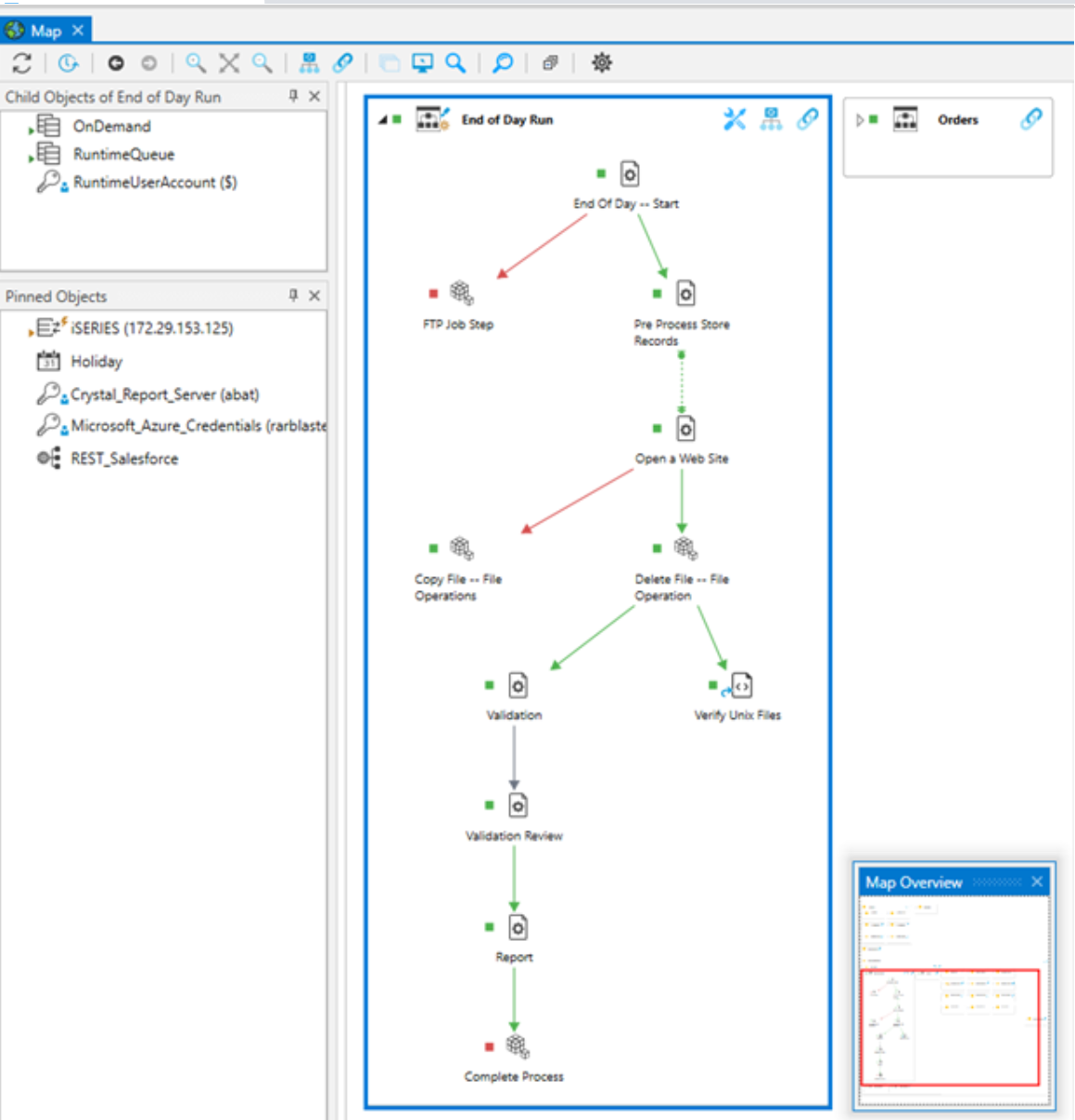
Conclusion
ActiveBatch remains a market leader in the workload automation space in part because of its strong list of out-of-the-box features and unique licensing model. ActiveBatch is ahead of similar platforms technologically by offering its Super REST API Adapter out-of-the-box as well as AI-powered Health Checks to optimize client environments.
Gartner estimates that most large enterprises rely on at least eight scheduling tools, often deployed in silos, making end-to-end workflows difficult to manage and maintain. With ActiveBatch, users can automate, orchestrate, monitor and manage processes across disparate environments. This includes automating simple tasks and assembling end-to-end services, all within a single platform. The value of this can’t be understated: As IT operations become more complicated and the role of IT shifts, the ability to manage end-to-end processes from a single location will prove critical.
Image source: www.advsyscon.com
Related posts:
- Redwood RunMyJobs Workload Automation Tool Review
- Redwood SAP Review (2024): The Best Job Scheduler for SAP Customers?
- Workload Automation vs Workflow Automation: What’s the Difference?
- 11 Best Workload Automation Tools (Free and Paid) for 2023
- 10 Best Batch Scheduling Software (Free and Paid) in 2023
- API Testing Interview Questions
- Creating test case using script mode


